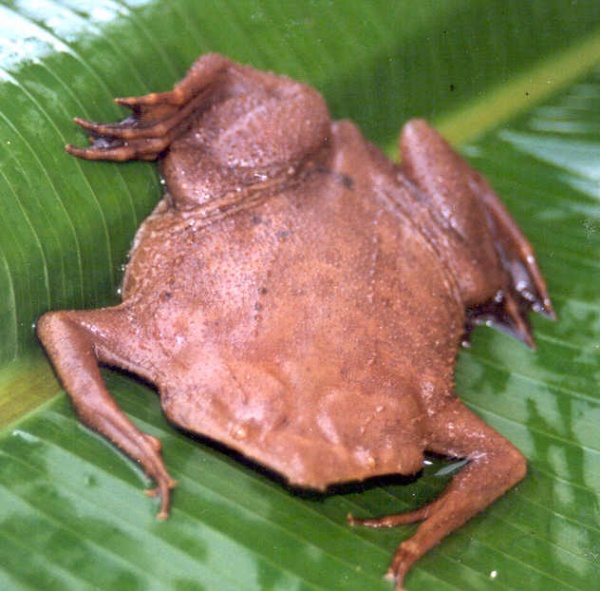Facts About Surinam Toad
The Suriname toad, also known as the star-fingered toad, is a captivating amphibian species native to South America. This distinctive creature inhabits countries such as Bolivia, Brazil, Colombia, Ecuador, French Guiana, Guyana, Peru, Suriname, Trinidad and Tobago, and Venezuela. It primarily resides in moist lowland forests, swamps, and freshwater marshes but faces growing threats due to habitat loss.
In terms of appearance, the Suriname toad resembles a mottled brown leaf and is almost completely flattened. It possesses broad, webbed feet with star-shaped tips on its front toes. Typically, these toads are about 10 to 13 cm long, though some can grow nearly up to 20 cm. Remarkably, they lack teeth, a tongue, and have tiny eyes.
These toads are usually found in slow-moving streams and rivers. They are both predators and scavengers, feeding on invertebrates and small fish. They utilize their unique star-shaped fingertips to capture prey or to consume dead organisms they encounter.
One of the most fascinating aspects of the Suriname toad is its reproductive behavior. Unlike most toads, males do not croak to attract mates. Instead, they produce a clicking sound by snapping a bone in their throat. During mating, the female releases eggs, which the male subsequently embeds into the skin on her back. These eggs develop in pockets resembling an irregular honeycomb. The embryos grow into tadpoles within these pockets and eventually emerge as fully developed toads. After giving birth, the mother sheds the thin layer of skin that contained the eggs, ready to begin the process anew.

 Peru
Peru